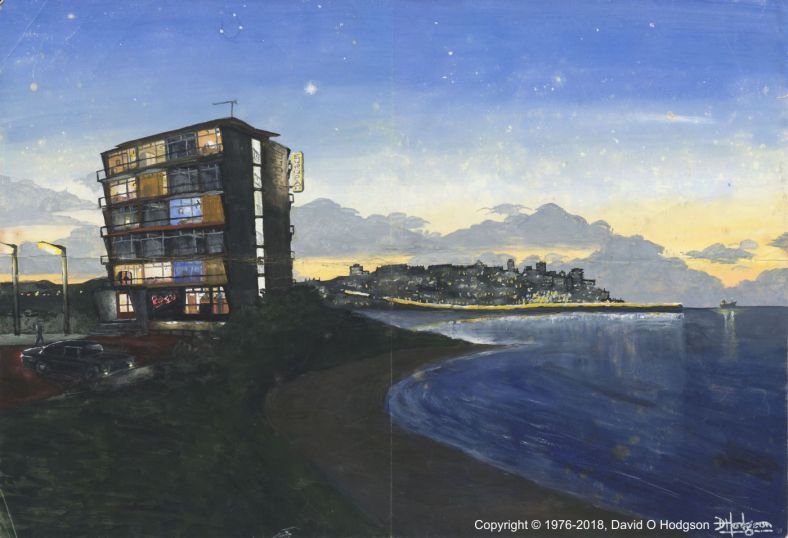
Whitefriars, Coventry, 1979
I took the photo above in Coventry (West Midlands) in 1979, depicting an interesting contrast of ancient and modern. The building on the right is what remains of the Whitefriars Monastery, which has survived because it became Coventry’s workhouse during the nineteenth century.
On the left, next to the monastic remains, the city’s elevated Inner Ring Road sails past, with a modern office tower in the background. Ironically, since I took the photo, the modern tower seems to have been demolished, while the ancient Whitefriars building looks just the same now as it did then.
I first left my parents’ home in Scarborough, to live independently in Coventry, almost exactly forty years ago today, during the first week of October 1978, and the scene shown above was just one of many extraordinary sights that greeted me after I arrived in a new city.
A Memorable Day
For most of us, the day when we leave our parents’ home and start living independently is likely to be a memorable one. That was certainly true for me, although it was an event that I’d somewhat feared until it actually happened.
When I did finally make the move, I found it to be wonderful. A whole new world seemed to open up for me, and I never wanted to return to living with my parents!
To College or Not
For those who go on from school to university, their first experience of independent living is likely to be as undergraduates in college “dorms” (halls of residence). However, back in the 1970s, when I reached that age, only about 10% of Britain’s young people went on from school to university, so that experience was available only to a minority. (The situation is drastically different now.)
In those days, there were no universities in our home town of Scarborough, so, for me, going to college would inevitably involve living somewhere else. The nearest universities were in York and Hull, but even those were not sufficiently close to allow daily commuting.
The Stay-at-Home Who Didn’t
As my younger brother and I were growing up, it seemed that I was usually the “stay-at-home”, whereas he seemed to be the more “adventurous” one, who was thought to be more likely to leave.
The idea that I might one day “go away to university” was first suggested to me by my mother when I was about 8 years old. I really didn’t like the sound of that, to the extent that she had to assure me, explaining that, when my father went away to Teacher Training College, he had really enjoyed the experience. (She failed to add that, when my father went away to that college, he was about 40 years old!)

Tea in the Garden, West Street, Scarborough, June 1973
The photo above shows (left-right) my mother, our dog Meg, my brother and me, staying at home!
Artificial Limitations
In 1977, I was preparing to sit my Advanced-Level examinations, and it was time to start thinking seriously about what I would do after leaving school. Everyone seemed to take it for granted that I would continue my education at a university. Personally, I wasn’t so sure, and in any case, what would I study and where?
I’ve mentioned in a previous post that, thanks to poor career advice, I decided to apply for Civil Engineering degree courses. (With the benefit of 40 years of hindsight, that decision seems even more ludicrous!) Some universities offered a more general Engineering Science degree, in which you could opt for a Civil Engineering specialty before graduation.
I interviewed at and received offers from four universities, and, on the basis of my experience during the interviews, I eventually decided to accept an offer from the University of Warwick (located in Coventry).
I was the first in my family even to apply to a university, so I had absolutely no guidance as to how to choose between the offers. I seem to remember that my final decision was made on the basis of the landscape in each campus, which is actually quite a poor basis for making such an important decision!
I still hadn’t really grasped the fact that I had committed to moving nearly 200 miles away in the near future. However, as the date of the first term drew closer, I warmed to the idea of getting away from the depressing environment in Scarborough.
Expanded Horizons
During the first weekend of October 1978, my parents drove me to the Halls of Residence at Warwick University, helped me get my suitcases into my room, then left me to it.
Any sense of trepidation that I experienced at that moment soon evaporated, as I began to discover the new freedom of independent living!
Of course, the fact that most of my fellow students were experiencing the same epiphany was tremendously helpful, because we could “compare notes” regarding the best places to shop or hang out. Very few of us could afford cars, so we were mostly reliant on public transport. Fortunately, the West Midlands Passenger Transport Executive (WMPTE—which we referred to as “Wumpity”) and the Midland Red company provided comprehensive bus services, so we were able to get to most places that we needed to visit. Even so, bus travel wasn’t necessarily always pleasant, as illustrated by my view below of Coventry’s Pool Meadow Bus Station one snowy winter morning.

Pool Meadow Bus Station, Coventry, in the Snow
For longer journeys, British Rail offered “Student Railcards” that provided a 50% discount on standard fares, making rail travel quite cheap.
An Exciting City
Before I began living there, all that I really knew about Coventry was that it had famously been “blitzed” during World War II, which had destroyed much of the city center. By the time that I arrived there, most of the bombed sites had been redeveloped, and the central area presented a pleasant, neat and modern appearance, as shown below in my view of Broadgate Square from the tower of the bombed-out cathedral.

Broadgate Square, Coventry, from the Cathedral Tower
Although British industry was already in decline in those days, Coventry was nonetheless still very much an engineering center (which was largely what had made it such a tempting target for the Luftwaffe).
Many local engineering companies gave professional presentations on their newest developments, and as a student, I received invitations to those. For me as an aspiring engineer and transport enthusiast, it was very exciting to be able to go along and listen to discussions of new vehicles and other technical advances! For example, one evening the commercial vehicle manufacturer Metro-Cammell Weymann gave a presentation on their new Metrobus in the Hotel Leofric (on the right in the photo above), and I went along not only for the talk, but also for the free “wine and cheese”!
Clipped Wings
Sadly, as I’ve related in previous posts, my first year at Warwick did not go well academically, largely because of the traumatic events that were occurring in our family at around that time. (I even visited the University’s Student Counselor, in the hope that she would have sympathy for my situation and offer me some kind of “deferment”, but she clearly had no interest in such things.) I was forced to drop out of the course at the end of that year, which at the time seemed like a disaster (but as things turned out, was for the best).
Knowing that I was going to have to leave university lodgings, I made some effort in Spring 1979 to try to find a job in Coventry, but received very negative responses. (Later, such attitudes would not have deterred me, but I was too inexperienced at that time to persevere.) Thus, it seemed that I had no choice but to return to my mother’s home in Scarborough (my father having died in April 1979).
A Commitment to Leaving
As related in an earlier post, I ended up obtaining an office job in Scarborough and living with my mother there for about 18 months, before returning to university, this time further away—in London—but with ultimate success.
Despite my “false start”, my mind was made up from those first few weeks in Coventry, that, whatever it took, I would move away from Scarborough and forge my own independent life.
Of course, I still had no desire at that time to move to another continent, which I in fact did within 10 years. Nonetheless, the seed of the idea that ultimately led to my being here, now, was planted on the day that I left home.

Whitefriars, Coventry, 1978









































